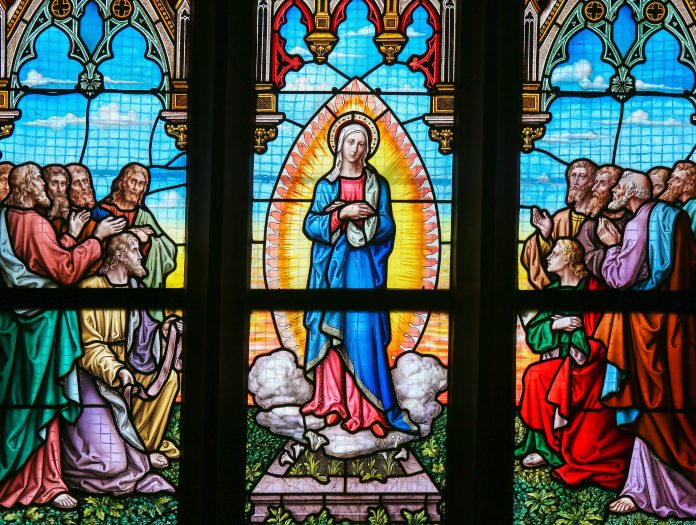
by H. Richard McCord
The Second Vatican Council, the modern popes, and the U.S. Catholic bishops have emphasized a teaching on the Christian family that is both easy to overlook and difficult to put into practice. “The Christian family constitutes a specific revelation and realization of ecclesial communion, and for this reason . . . it can and should be called ‘the domestic Church’” (Pope John Paul II, On the Christian Family, no. 21).
The family, or household, has been the basis of Church life since early Christian times. Communities of worship, witness, and service were established in households, or what we might think of as extended families.
This family-centered model receded as the Church grew in size and complexity, spreading to all parts of the world. Although the parish became the agent of evangelization and catechesis—eclipsing this as a responsibility of the family—there has always been an awareness that these two communities (family and parish) must work as partners.
This partnership has a theological basis in two teachings found in the Catechism of the Catholic Church. First, the Sacrament of Matrimony builds up ecclesial communion (CCC, nos. 1534-1535). Because marriage is the foundation of a family, creating and sustaining family life is the most immediate and important way that Christian spouses contribute to ecclesial communion. They bring a Church community into existence at its smallest, most intimate level.
Second, because the Sacrament of Matrimony is a living sign of Christ’s love for the Church, the family becomes a microcosm of the Church, “a domestic church” (CCC, nos. 1655-1657).
A Partnership of Connections
In their recent pastoral letter on marriage, Love and Life in the Divine Plan, the U.S. bishops call the Christian family a domestic church because, “. . . it is a small communion of persons that both draws its sustenance from the larger communion that is the whole Body of Christ . . . and also reflects the life of the Church so as to provide a kind of summary of it” (p. 39). It is a partnership that makes connections between what happens in each of these communities.
Convinced of the need for connections, the bishops identified—in their message to families in 1994 entitled Follow the Way of Love—various examples of how the family ministers as a domestic church. As a catechist, you can model these with your students, support these behaviors with their parents, and encourage your students to practice their roles as members and, in the future, family leaders in the domestic church.
* Believe that God cares about you. Turn to him in times of trouble. Give thanks to him when all goes well.
* Love and never give up believing in the value of another person. Young ones form a picture of God drawn from their earliest experiences of being loved by family.
* Foster intimacy within the family. Sharing yourself and being accepted is indispensable to forming a close relationship with God.
* Evangelize by professing your faith, acting in accord with gospel values, and setting an example of Christian living.
* Educate by imparting a knowledge of the faith and helping children develop Christian virtues.
* Pray together as a family.
* Serve one another even to the extent of sacrificing your own wants for another’s good.
* Forgive and seek reconciliation, particularly when it comes to old hurts and grudges—showing family members the unconditional love of God.
* Celebrate life in the ordinary rhythm of birthdays, anniversaries, rites of passage, reunions, holy days, and holidays.
* Welcome the stranger, especially the lonely and the grieving, into your home and care.
* Act justly by treating all people with respect and working for a better world.
* Affirm life by upholding its value and opposing all forces that work to destroy it.
* Promote vocations by encouraging your children to listen for God’s call and respond to his grace.
Dr. McCord is Executive Director of the USCCB Committee on Laity, Marriage, Family Life, and Youth. He and his wife, Denise, have been married for 35 years and are the parents of a young adult son, Andrew.
Copyright 2011, Bayard, Inc. All rights reserved. This article is protected by United States copyright and other intellectual property laws and may not be reproduced, rewritten, distributed, redisseminated, transmitted, displayed, published or broadcast, directly or indirectly, in any medium without the prior written permission of Bayard, Inc.
This article was written by the Catechist Staff and appeared in Catechist magazine, February 2011.
Image Credit: Shutter Stock 506725372




